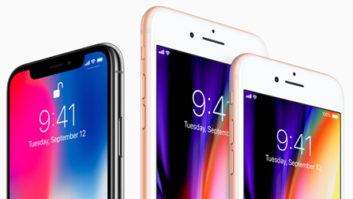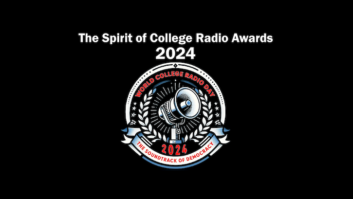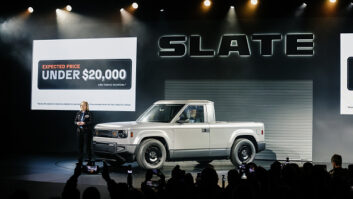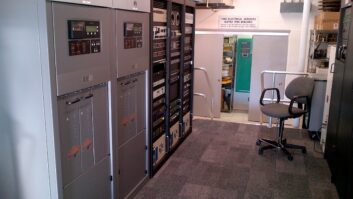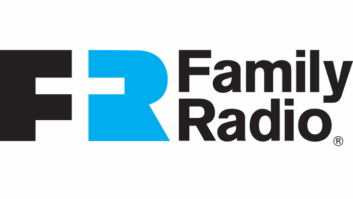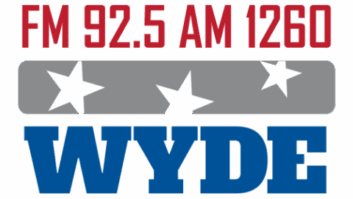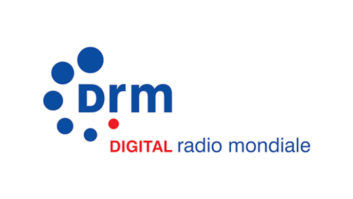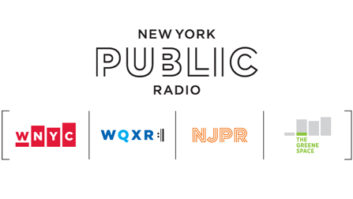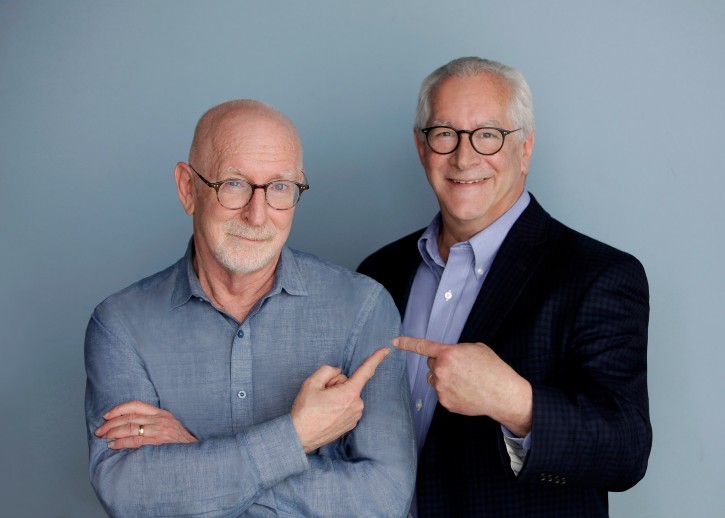
Perhaps no one has pushed broadcasters to embrace the digital dashboard and boost their visual presence more than the Jacobs brothers.
Fred Jacobs, president of Jacobs Media, and Paul, its VP and general manager, have made it a mission to engage with broadcasters and highlight the importance of looking good in the dash.
This story is an excerpt from Radio World’s ebook “Discovering the Dashboard 2025.”
Radio World: What do you take away from the new Quu research released in April?
Fred Jacobs: There are a number of great insights from this year’s report, plus we now have a solid point of comparison with last year’s survey. In terms of how new vehicles are equipped, we’re not just seeing ubiquity for FM and (mostly) AM, but also for the Apple CarPlay and Android Auto platforms.
The fact that a radio button on dashboards has fallen to just three new vehicles out of 10 suggests that more and more new owners are going to struggle just to find their favorite radio station. Overall, AM/FM radio is losing “discoverability” among drivers and passengers.
Another key takeaway is that entertainment and information options in the dash continue to grow and splinter. This will put pressures on brands — whether it’s Spotify, SiriusXM, the “Takin’ a Walk” podcast or WMMR — to be top of mind and a vital option when a driver (or passenger) goes for a ride.
Broadcasters will need to understand the distinction between the one in four vehicles that are “radio-forward,” opening to a radio-only screen or having a radio button, versus the three in four that are “audio-forward,” meaning they are equipped with an audio/media button that is “last touch,” restarting with the medium being played when the vehicle was shut off.
[Related: “Put Radio Back to Being Front and Center in the Car”]
This suggests that radio stations may need to rethink their programming priorities. For most broadcasters, the focus has traditionally been on Monday to Friday, 6 a.m. to 7 p.m. But when you consider how many vehicles start up by playing the previous listening option from the last time someone was in the car, all dayparts and days suddenly become vital, whether it is nights, weekends or other times outside of prime.
The growth of Apple CarPlay and Android Auto is a double-edged sword for radio. The good news is that any station can appear on these home screens alongside other apps. However, in order for that to happen, stations ideally need to have a mobile app compatible with either or both of these ecosystems. Otherwise, your station is invisible.
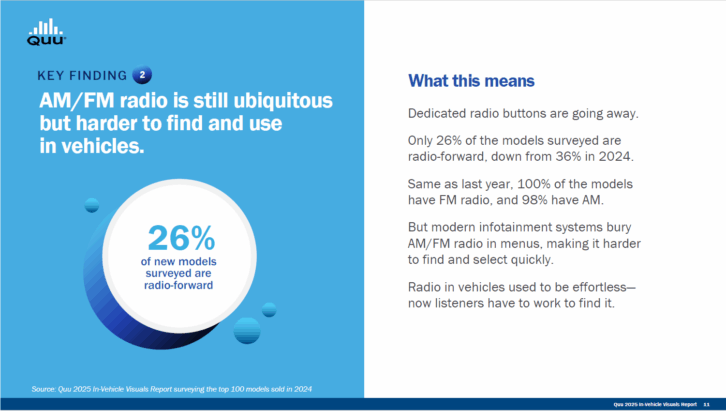
RW: Paul, what should be of particular interest to radio managers in the report?
Paul Jacobs: There are two somewhat conflicting findings. There are more opportunities than ever for stations to upgrade their in-dash presence, promote their content and generate revenue than ever before. Apple CarPlay, Android Auto and systems like Quu provide stations parity — and even superiority — compared to competitors like Spotify and SiriusXM, which is significant.
On the other hand, the fact that a growing number of new vehicles are coming pre-loaded with streaming software platforms ups the ante. Stations that don’t have their own mobile app coded for Apple CarPlay and Android Auto, for example, will face a growing challenge to cut through the in-dash clutter.
RW: What actions should stations take as a result?
Paul Jacobs: It starts with a station mobile app that appears in CarPlay and Android Auto.
For broadcasters who have not experienced these platforms, borrow someone’s car or head to a local car dealership and test drive one for an afternoon. Put yourself in the shoes of your listeners and don’t assume your audience will figure it out.
The marketing of your station’s dashboard strategy requires on-air, social media, website, email database and short videos to deliver your messaging.
One common mistake many make is promoting the app/dashboard for a couple weeks, then move on to other things. This is the type of strategy that requires emphasis and consistency because new app users happen every day, and regular listeners forget.
It also transcends programming and promotion. Sales teams need to educate their advertisers on how the station has strong presence in the #1 listening location: the car dashboard. Too many advertisers have bought into the assumption that radio is old-school and analog. If you don’t point it out, the advertisers won’t figure it out.
To that end, the dash now represents a wonderful advertising opportunity for clients. Because inventory on the screen is limited, start a feeding frenzy. Don’t sell it cheap or for a short period of time. The dashboard is prime real estate and needs to be treated that way.
RW: How can broadcasters better utilize the dashboard for local advertisers?
Paul Jacobs: When advertisers talk about the popularity of Spotify or SiriusXM, the salesperson’s response should be, “As a local business, try to buy them. Then call me back.” The dashboard opens up a singular opportunity for local advertisers they can’t get anywhere else. Showcasing a local client’s logo, reinforcing their on-air message, or providing contact information on the screen is something other media cannot do, and again, with no competition and limited inventory in such an important location (the dash), good salespeople should be salivating.
RW: Images or text. Which is most important? Is there a metadata feature broadcasters tend to overlook?
Fred Jacobs: The power is in the text. Images are compelling, but not every vehicle is equipped to include them. In addition to album art, I like to show personalities and shows as well. If a station’s talent are popular and top-of-mind, why not showcase them during times when they’re presenting content?
As for overlooked features, our Techsurvey data reveals many listeners want to know what song and/or artist is coming next. Obviously, there’s a bit of risk here, but if your programming is strong and you’re playing the right songs for your format, this “forward feature” should be an advantage.
RW: What’s a common mistake broadcasters make with dashboard visuals?
Fred Jacobs: It’s often feast or famine. Many stations simply underperform on these screens, including just the standard album art. No other programming content is part of their dashboard strategy, and that’s akin to leaving audience on the table.
The other side of this is trying to do too much with visuals. It’s smart to think about dashboard art like you would for a highway billboard. The fewer words and a singular message, the better.
RW: Is there still something that makes radio special and unique in the dashboard?
Paul Jacobs: What other medium can provide local real-time news and weather alerts for an area? Who else can empower local advertisers to stand above the national competition?
Radio has come so far from the days where all a client got was a flight of :30s and :60s. The ability to provide a dashboard visual and an on-screen text message to support or enhance an advertising message is a dream come true.
This is also a case where the sales effort fits perfectly into the programming strategy: “We are a local radio station.” It all comes together in the dash.
RW: The Quu report suggests that DTS AutoStage and HD Radio are the gold standard for radio in the dash. Is enough of the radio broadcast industry in line with them?
Fred Jacobs: These tech platforms have leveled the dashboard playing field, allowing broadcasters to not just keep up with their audio competitors, but even grab the advantage. I would like to see a greater programming and sales emphasis around their capabilities in order to create a better content experience, more audience engagement and a richer sales marketing effort that benefits advertisers. Radio can also use analytics to learn about their audience.
I also find there are many broadcasters who really haven’t experienced this technology while behind the wheel of a car. Even if you’re personally driving a 2006 Camry or a 2004 F-150, visit a local dealership, and test drive a car or truck equipped with HD Radio — and as a bonus, one with DTS AutoStage. Putting yourself in the shoes of your listeners while they’re behind the wheel is the experiential way to truly engage with these platforms. This is also a great way to see how your station looks on these screens as well as your competition.
